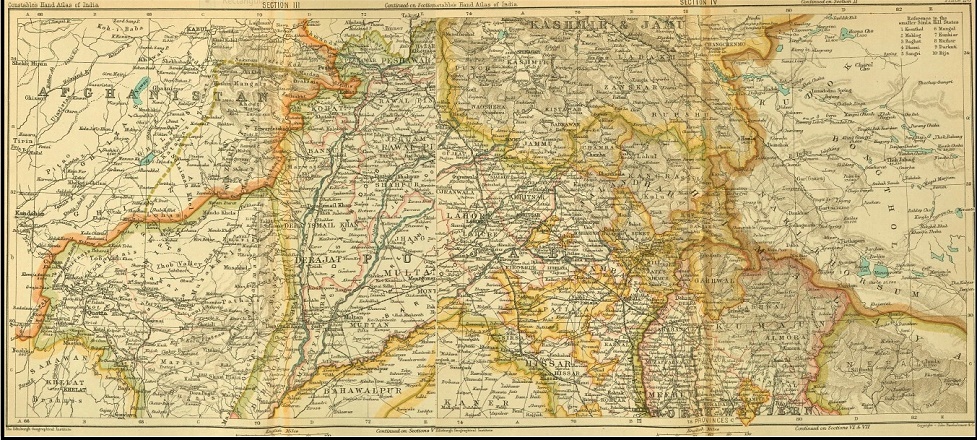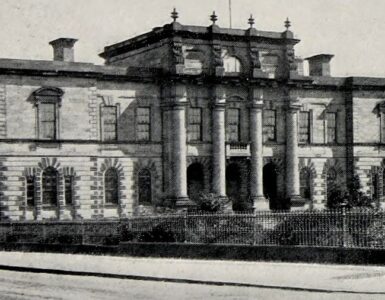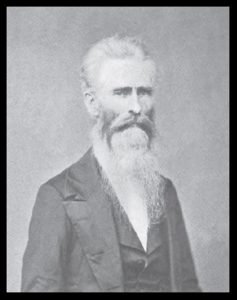 John Hunter was born June 29, 1806 to James and Eleanor (Thompson) Morrison in Wallkill Township, New York. James’s grandfather Morrison had emigrated from Scotland. John’s early studies were accomplished in Bloomfield Academy, New Jersey. At twenty-two years of age he professed faith in Christ in the Presbyterian Church on Cedar Street in New York (currently, Fifth Avenue) during the ministry of Cyrus Mason. It was two more years before he attended the College of New Jersey (Princeton) graduating with the class of 1834. Called to the ministry, his theological studies were completed in Princeton at the seminary which granted his certificate of studies in 1837. The Presbytery of New York, Old School, licensed Morrison September 12, 1837, then the next day he married the daughter of E. D. Ward, Anna Maria, who was eight years younger. Just a few weeks after licensure he was ordained on the first day of October. Events proceeded rapidly for the Morrisons because they were leaving for the foreign mission field in India, but first they joined other new missionaries for a public commissioning service in Tenth Presbyterian Church, Philadelphia. Dr. William W. Phillips of First Church, New York, and Dr. Henry R. Wilson spoke to the appointees encouraging them as they prepared for voyages to distant lands.
John Hunter was born June 29, 1806 to James and Eleanor (Thompson) Morrison in Wallkill Township, New York. James’s grandfather Morrison had emigrated from Scotland. John’s early studies were accomplished in Bloomfield Academy, New Jersey. At twenty-two years of age he professed faith in Christ in the Presbyterian Church on Cedar Street in New York (currently, Fifth Avenue) during the ministry of Cyrus Mason. It was two more years before he attended the College of New Jersey (Princeton) graduating with the class of 1834. Called to the ministry, his theological studies were completed in Princeton at the seminary which granted his certificate of studies in 1837. The Presbytery of New York, Old School, licensed Morrison September 12, 1837, then the next day he married the daughter of E. D. Ward, Anna Maria, who was eight years younger. Just a few weeks after licensure he was ordained on the first day of October. Events proceeded rapidly for the Morrisons because they were leaving for the foreign mission field in India, but first they joined other new missionaries for a public commissioning service in Tenth Presbyterian Church, Philadelphia. Dr. William W. Phillips of First Church, New York, and Dr. Henry R. Wilson spoke to the appointees encouraging them as they prepared for voyages to distant lands.
On October 14, the Morrisons left Philadelphia on a steamboat to Newcastle, Delaware, to set sail for India once the stormy weather cleared. They were on board the Edward which was under the command of Capt. J. H. Cheyney. It was the Sabbath so Rev. Morrison held a service on the deck with passengers and crew in attendance as he preached from Romans 10:4, “For Christ is the end of the law for righteousness to everyone that believeth.” Anna Maria described their accommodations on the Edward.
The stateroom admits one chair, and a small table, which answers the purpose also of a wash-stand, having a bowl fastened to it. Our berths are large, and by far more comfortable than I supposed they would be. And if we could have a little more air, we should sleep charmingly.
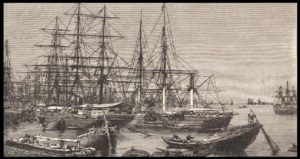 When the ship sailed for India October 16, the anticipated charming trip ended up a horrendous journey for Anna Maria. The one-hundred-seventy-day voyage to Calcutta was a nightmare of reoccurring bouts with sea sickness—one of which lasted two weeks. She also suffered a mysterious malady with symptoms that included a splitting headache and convulsions. The unidentified disease was diagnosed by one passenger claiming to have some medical knowledge as “congestion of the liver.” Late in the voyage, Anna Maria developed stomach pain to add to her discomfort. When the Edward arrived in Calcutta April 6, 1838, things were looking better because the Morrisons were in the country where they would serve the Lord, but despite the relative calm of port, Anna Maria’s headaches continued to be troublesome. A physician treated her by putting leaches and ice on her head. Added to the Morrisons’ difficulties was the news that cholera was raging in Calcutta. The sequence of events is not clear at this point, but it appears the Morrisons remained on the Edward in the bay waiting for transport to Allahabad, which is nearly 500 miles northwest of Calcutta. Anna Maria developed symptoms indicative of cholera then died April 27. So, John and Anna Maria had been married about seven months, on the move the whole time, and they did not reach their field of ministry in Allahabad together. To say the least, this is a sad story but not an uncommon one for western missionaries working in Asian climates.
When the ship sailed for India October 16, the anticipated charming trip ended up a horrendous journey for Anna Maria. The one-hundred-seventy-day voyage to Calcutta was a nightmare of reoccurring bouts with sea sickness—one of which lasted two weeks. She also suffered a mysterious malady with symptoms that included a splitting headache and convulsions. The unidentified disease was diagnosed by one passenger claiming to have some medical knowledge as “congestion of the liver.” Late in the voyage, Anna Maria developed stomach pain to add to her discomfort. When the Edward arrived in Calcutta April 6, 1838, things were looking better because the Morrisons were in the country where they would serve the Lord, but despite the relative calm of port, Anna Maria’s headaches continued to be troublesome. A physician treated her by putting leaches and ice on her head. Added to the Morrisons’ difficulties was the news that cholera was raging in Calcutta. The sequence of events is not clear at this point, but it appears the Morrisons remained on the Edward in the bay waiting for transport to Allahabad, which is nearly 500 miles northwest of Calcutta. Anna Maria developed symptoms indicative of cholera then died April 27. So, John and Anna Maria had been married about seven months, on the move the whole time, and they did not reach their field of ministry in Allahabad together. To say the least, this is a sad story but not an uncommon one for western missionaries working in Asian climates.
John continued his journey to his field of ministry and worked faithfully throughout the years. He came to be known among the missionaries as “The Lion of the Punjab,” because of his tenacity and faithful preaching of the Bible. Though tough, he was also congenial, well loved, and greatly respected by the people of India as well as his colleagues. It did not take Morrison long to remarry because less than a year after Anna Maria’s death on February 20, 1839 he married at Allahabad Isabella Hay of Perthshire, Scotland. They had likely met in the missionary community. But after only four years Isabella died at Calcutta February 14, 1843. Then during a visit to the United States he married on June 1, 1846 a woman from England named Anna Williams.
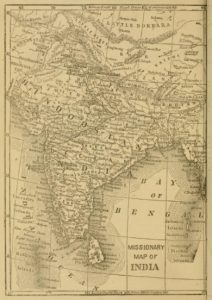 One event in the history of India that was particularly difficult for the Morrisons and their mission occurred in May 1857 when some sepoys—Indian soldiers serving under British military command—shot their officers in Meerut in reaction to the British imprisoning some sepoys because they disobeyed orders regarding the use of their Enfield rifles. The sepoys marched to Delhi to join others in restoring the Mughal emperor, Bhādur Shah II. The revolt spread, the British responded by deploying reinforcements from other colonies, but peace was not achieved until summer 1858. It was a difficult and dangerous time for missionaries in India. In the Presbyterian missions in northern India, four couples were killed and two children. Fortunately, John and Anna were spared, but their mission station along with several others in the region were either partially or completely destroyed. John and Anna had enjoyed nearly fifteen years of marriage when she became Morrison’s third wife to pass away at Cawnpore, December 20, 1860. The cause of her death was small pox. Once again, he had to pick up the pieces of his life and continue ministering to the Indian people. Anna Maria died of cholera, Isabella died from an unknown cause (possibly child birth), and Anna passed away from small pox. Would he marry again?
One event in the history of India that was particularly difficult for the Morrisons and their mission occurred in May 1857 when some sepoys—Indian soldiers serving under British military command—shot their officers in Meerut in reaction to the British imprisoning some sepoys because they disobeyed orders regarding the use of their Enfield rifles. The sepoys marched to Delhi to join others in restoring the Mughal emperor, Bhādur Shah II. The revolt spread, the British responded by deploying reinforcements from other colonies, but peace was not achieved until summer 1858. It was a difficult and dangerous time for missionaries in India. In the Presbyterian missions in northern India, four couples were killed and two children. Fortunately, John and Anna were spared, but their mission station along with several others in the region were either partially or completely destroyed. John and Anna had enjoyed nearly fifteen years of marriage when she became Morrison’s third wife to pass away at Cawnpore, December 20, 1860. The cause of her death was small pox. Once again, he had to pick up the pieces of his life and continue ministering to the Indian people. Anna Maria died of cholera, Isabella died from an unknown cause (possibly child birth), and Anna passed away from small pox. Would he marry again?
In 1863 Rev. Morrison returned to the United States for a visit. He was elected moderator of the Old School General Assembly during its meeting in Peoria, Illinois. He was a member of the Presbytery of Lodiana, one of three presbyteries of the Synod of Northern India. Normally the moderator is present to deliver a sermon to the assembly the year after he served, but in the case of Moderator Morrison he would be back in India, so as he adjourned the 1863 assembly he made a few closing comments of appreciation.
I came here deeply depressed and discouraged with the prospects of the work to which my life has been devoted, but you have greatly cheered and encouraged me. You have testified your interest in that work by calling me, from among many older and better qualified, to preside over your deliberations. … You have borne with my inexperience and defects, and carried me through the difficult and delicate duties of this office. For this I thank you, both in my own name and in that of my brethren in the missionary work. You have still further cheered and encouraged me by the hearty response you have given to the appeal made to you in behalf of our broken-down missions. Now, dear brethren, bear in mind all this, and reflect with what a crushing weight of disappointment will the news fall upon us, if we hear that you have gone home to forget all this, and do nothing more to help us than has been done heretofore. Allow me to beg that you will keep fresh in your memories the sweet hours we have spent together, the solemn pledges we have mutually given to do our respective parts in the great work of saving a lost world. Go, dear brethren, tell your Presbyteries and your flocks what you have pledged to God and his cause. Tell them of the nature of our work, and how we are struggling to bear the heat and burden of the day. Endeavor to excite their interest on behalf of their missionaries, in behalf of a dying world and a bleeding Savior. Endeavor to get them to inform themselves on all these subjects, that they too may work and pray with you and us.
It appears that the great loss of property caused by the sepoy revolt of 1857-1858 had severely crippled the missionary work in India. He encouraged the General Assembly to remember their mission work in India. It is often difficult for missionaries to be so far from home, family, and familiar culture, and the difficulty becomes deeply distressing if they feel forgotten. Morrison and his colleagues not only wanted to be remembered in prayer, but also remembered by simply being in the Presbyterians’ thoughts.
 Ten years after the death of Anna, John married his fourth wife in 1870, Elizabeth Amalie Reuther, the daughter of German missionary Rev. Charles Frederick Reuther of the Church of England Missionary Society. Morrison continued his ministry in the several churches of India until he, like his first wife, died of cholera, September 16, 1881, at Dehradun. The cultural, dietary, climatic, and religious transition from the United States to northern India was then, as it is today, dramatic, yet despite the cost to his household, Dr. Morrison continued ministry. He worked not only in Allahabad but other cities including Agra, Sabathu, Simla, Ambala, Lahore, Rawalpindi, and Dehradun. Elizabeth survived John along with five sons and three daughters. Two of the sons, Rev. W. J. P. Morrison and Rev. Robert Morrison and two daughters served in overseas missions. He was honored by Washington College with the Doctor of Divinity in 1857. His publications include: The Love of God, A Sermon, 1840; a sermon on infant baptism published in Allahabad in 1847; On Prayer for the Outpouring of the Holy Spirit, date unknown; and Presbyterian Union: Being a Compilation of the Measures that have been Adopted for Promoting the Organization of the Presbyterian Church for all India, 1873.
Ten years after the death of Anna, John married his fourth wife in 1870, Elizabeth Amalie Reuther, the daughter of German missionary Rev. Charles Frederick Reuther of the Church of England Missionary Society. Morrison continued his ministry in the several churches of India until he, like his first wife, died of cholera, September 16, 1881, at Dehradun. The cultural, dietary, climatic, and religious transition from the United States to northern India was then, as it is today, dramatic, yet despite the cost to his household, Dr. Morrison continued ministry. He worked not only in Allahabad but other cities including Agra, Sabathu, Simla, Ambala, Lahore, Rawalpindi, and Dehradun. Elizabeth survived John along with five sons and three daughters. Two of the sons, Rev. W. J. P. Morrison and Rev. Robert Morrison and two daughters served in overseas missions. He was honored by Washington College with the Doctor of Divinity in 1857. His publications include: The Love of God, A Sermon, 1840; a sermon on infant baptism published in Allahabad in 1847; On Prayer for the Outpouring of the Holy Spirit, date unknown; and Presbyterian Union: Being a Compilation of the Measures that have been Adopted for Promoting the Organization of the Presbyterian Church for all India, 1873.
Barry Waugh
Notes—The header map of Punjab is from Constable’s Hand Atlas of India, 1891, which is ten years after Morrison died. Information on Morrison’s family is from The History of the Alison, or Allison family in Europe and America, A.D. 1135 to 1893. The Presbyterians divided in 1837 and were known as Old School and New School. The information about Anna Maria (Ward) Morrison is from the diary and correspondence about her voyage to India as recorded in Memoir of Mrs. Anna Maria Morrison, of the North India Mission, compiled and edited by E. J. Richards and published in New York by M. W. Dodd, 1843. Information about the sepoy revolt and the Old School missions in India was provided by Secretary John Leighton Wilson of the Board of Foreign Missions in The Great Revolt in India: Its Effects Upon the Missions of the Presbyterian Board, New York, 1857. Other information was gathered from biographical catalogs, missionary publications, and Nevin’s Encyclopedia of the Presbyterian Church; particularly helpful was his memorial in the Princeton Seminary Necrological Reports. The view of the port of Calcutta is from Cassells Illustrated History of India, Vol. 2, by James Grant, 1891. For an account of world missions including India at the time of Morrison’s ministry see Historical Sketches of the Missions under the Care of the Board of Foreign Missions of the Presbyterian Church U.S.A, published by the Women’s Foreign Missionary Society in at least four editions. The article, “The Presbyterian Church in India: Sketch of the History of the Movement for Presbyterian Union,” Journal of the Presbyterian Historical Society, September 1905, 138-46, provided information and the portrait, too. The application of ice to Anna Maria Morrison’s head for pain relief may have been a common practice in the day because Thomas Smyth, 1808-1873, pastor of Second Presbyterian Church Charleston, South Carolina, put his throbbing head in a bucket of ice water for relief. It is not known if Dr. Morrison participated in the translation of the Westminster Confession into Hindustani, but it seems likely that he did because it was published in 1842 during his ministry.


